Search
Search Results
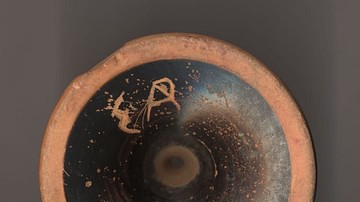
Image
Greek Pottery Graffito
The base of a cup which shows graffito - an incised mark, usually in the form of letters or numbers but also sometimes words and phrases. When such marks are painted they are called dipinto. The marks may indicate prices, trademarks and ownership...
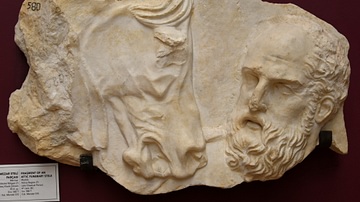
Image
Attic Funerary Stele
Only this fragment of a large funerary stele has survived. It shows an old bearded man, who has frontal baldness, facing a horse head. Marble. Late Classical Period, 4th century BCE. probably from Attica Region, in modern-day Greece. (Museum...
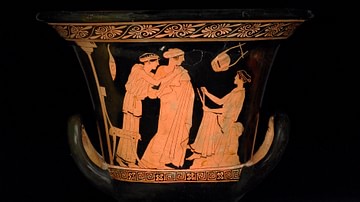
Image
Musical Scene on a Krater
A calyx-krater depicting two women listening while a third woman, who holds two flutes, sings. Attributed to the Niobid Painter. c. 460-450 BCE. From Vulci, Italy. Produced in Attica, Greece.
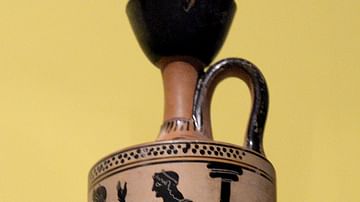
Image
Lekythos with the Ransom of Hector Scene
Oil, especially olive oil, was stored in specialized Greek pottery; lekythos (pleural, lekythoi). Many lekythoi were found inside tombs; they were used to anoint the dead bodies of single men. Mainly dull red and black paints were used by...
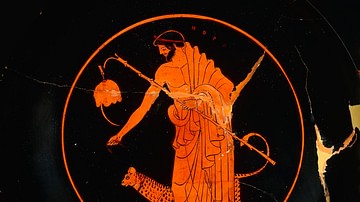
Image
Vase Painting of a Man with his Cheetah
A red-figure vase painting depicting a bearded man with his pet cheetah. The man holds a walking stick in one hand, and with the other he leads the cheetah by a red leash connected to its collar. Attributed to the painter Apollodorus. Produced...

Image
Marble Figurine of Leda Avoiding the Swan
Attic table support, depicting Leda avoiding the swan, c. before 250 CE. Archaeological Museum of Thessaloniki, Greece. Founded c. 316 BCE and located at the heart of the Thermaic Gulf in the Aegean, the emporium city of Thessaloniki might...
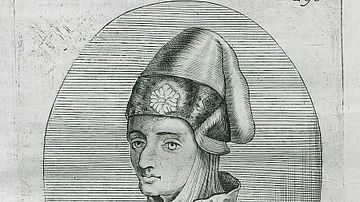
Image
Nerio I Acciaioli
Nerio I Acciaioli, ruler of the Duchy of Athens (r. 1388-1394 CE) who briefly conquered the Duchy of Neopatras. Illustration from Atene Attica Descritta da suoi Principii sino all’acquisto fatto dall’Armi Venete nel 1687…, Venice, Antonio...
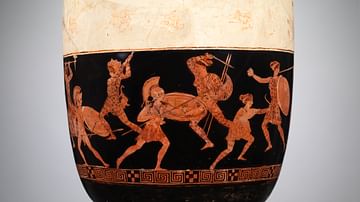
Image
Detail of Lekythos with Amazonomachy
Bottom register of a red-figure lekythos. This scene depicts the Greeks, led by Theseus, engaged in combat with the Amazons led by Queen Hippolyte. Attributed to the Eretria Painter, c. 420 BCE. Attica. Metropolitan Museum of Art, New York.
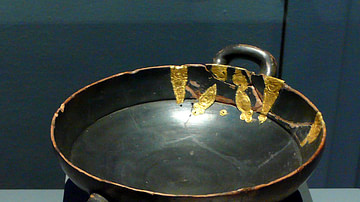
Image
Repaired Greek Cup
A 5th century BCE drinking cup (kylix) from Attica which was imported and then repaired using gold by Celtic craftworkers. (Historisches Museum, Bern)
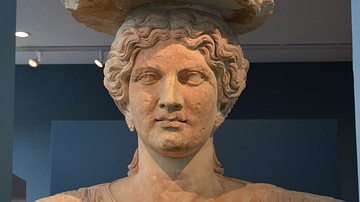
Image
Caryatid from Eleusis
The upper part of one of the caryatids that flanked the Lesser Propylaea of the sanctuary of Demeter and Kore at Eleusis. The caryatid was made in Attica in about 50 BCE. (Eleusis Museum, Greece)